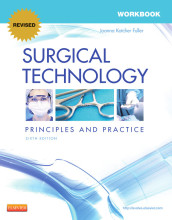Decontamination, Sterilization, and Disinfection
42 important questions on Decontamination, Sterilization, and Disinfection
Sterile instruments and supplies are loaded onto a _____ before surgery and transported to the surgical suite,
The first phase of reprocessing is ?
Because paper products are difficult or impossible to decontaminate, patient's charts, x-rays, and lab documentation should be ________.
- Higher grades + faster learning
- Never study anything twice
- 100% sure, 100% understanding
The flash sterilizer is used to rapidly sterilize clean, decontaminated equipment for immediate use. This method is used only when no other method is available. Implants are ______ sterilized except in a emergency and must be monitored with a biological control system.
The phrase flash sterilization has been replaced by ______ sterilization, in which unwrapped surgical equipment is sterilized by a high-vacuum steam sterilization method just before use.
_______ is used to sterilize objects that cannot tolerate the heat, moisture and pressure of steam sterilization.
The temperature of the gas directly affects the penetration of items in the chamber. Operating temperature range from _______ for a "cold cycle"
and ______ for a "warm cycle"
The recommended practice to damp dust the surgical lights, furniture, and fixed equipment in the operating suite is _______.
The process of _______ of the operating suite follows every surgical case.
Power-driven surgical instruments (drills, and saws) should be disassembled before ?
The ultrasonic cleaner removes debris from instruments by a process called?
A ______ is a paper strip or specialty treated tape that changes color when exposed to a specific temperature.
The purpose of wrapping an item before sterilization is to protect it from _____ after the sterilization process.
The Spaulding classification of reprocessing instruments and patient materials assigns three risk levels based on the specific region of the body where the device will be used. These levels are critical, semicritical, and _____?
The bacteria used during biological monitoring for steam sterilization is _____?
Most items available prepackaged from a manufacturer have been sterilized by ____?
After the sterilization cycle, hydrogen peroxide gas is converted to its molecular components, which is?
_______ sterilization requires aeration to dissipate any residual gas.
What temperature can be used for Gravity Displacement steam sterilization?
There are three distinct phases in all types of steam sterilizers. ______ is when air is removed from the chamber and replaced with steam.
Two types of steam sterilizers are used in the clinical setting.
The ______ sterilizers operates on the principle that air is heavier than steam
______ is sporicidal and tuberculocidal and effective against HIV. The CDC recommends this product for the use in spot cleaning of blood spill, because it is very fast acting.
The important factor to remember about _____ is that they do not indicate sterility, only that certain conditions for sterility been met.
______ is a skilled, certified profession that requires expertise in the science and practice of materials management, decontamination, and sterilization.
_______ is a highly reliable method of determining whether the conditions inside the sterilizer met the parameters for sterilization.
Stethoscopes, blood pressure, and tourniquet cuffs are
1. Critical items
2. Semicritical items
3. Noncritical items
Objects that enter sterile tissue or the vascular system
1. Critical items
2. Semicritical items
3. Noncritical items
Laryngoscopes, bronchscopes, and endotracheal tubes
1. Critical items
2. Semicritical items
3. Noncritical items
Can include bed linens, crutches, tables
1. Critical items
2. Semicritical items
3. Noncritical items
Comes into contact with mucous membranes or intact skin
1. Critical items
2. Semicritical items
3. Noncritical items
Includes vascular and urinary catheters
1. Critical items
2. Semicritical items
3. Noncritical items
Not required to be sterile because they do not penetrate intact tissues
1. Critical items
2. Semicritical items
3. Noncritical items
Destruction of microorganisms, except spores, by heat or chemical means.
1. Decontamination
2. Disinfection
3. Sterilization
Performed in washer sterilizer.
1. Decontamination
2. Disinfection
3. Sterilization
Uses steam, ethylene oxide, peracetic acid, or cobalt-60.
1. Decontamination
2. Disinfection
3. Sterilization
Process by which all microorganisms, including spores, are destroyed.
1. Decontamination
2. Disinfection
3. Sterilization
Uses isopropyl alcohol 70 % to 90 %, glutaraldehyde, and iodophor solution.
1. Decontamination
2. Disinfection
3. Sterilization
Used for anesthesia equipment, gastrointestinal endoscopes, bronchoscopes.
1. Decontamination
2. Disinfection
3. Sterilization
Monitored by chemical and biological methods to ensure patient safety.
1. Decontamination
2. Disinfection
3. Sterilization
Used for surgical instruments, implants, and needles.
1. Decontamination
2. Disinfection
3. Sterilization
"CYCLE OF REPROCESSING" List the 8 stages in order, starting with the point of use.
2. Sort and disassemble
3. Clean (ultrasonic cleaner)
4. Decontaminate (washer-sterilizer)
5. Inspect
6. Assemble and wrap
7. sterilize
8. Storage (Then its ready for point of use)
The question on the page originate from the summary of the following study material:
- A unique study and practice tool
- Never study anything twice again
- Get the grades you hope for
- 100% sure, 100% understanding
































